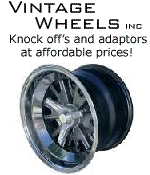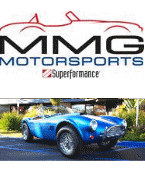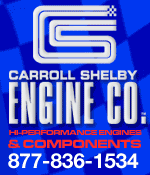OK, Iíll take a shot at this one. The generally accepted rule is that for a given displacement, larger bore/shorter stroke is better for generating higher horsepower, while smaller bore/longer stroke is better for generating low speed torque. To begin the discussion, we need to set some definitions.
Work is defined as a force moving through a distance. If you exert a force of 50 pounds to move a weight a distance of 4 feet, you have done 200 pound-feet of work. Note it doesnít matter which direction you move the load, what matters is that you exerted a force through a distance.
Similarly, torque is defined as a force acting through a distance, and is also measured in units such as pound-feet. A force of 100 pounds moving acting through a lever-arm of 2 feet produces 200 pound-feet of torque.
Power is defined as the time-rate of doing work; that is, how quickly a given amount of work (lb-ft) can be completed. Horsepower is a somewhat arbitrary scale that was originally developed to standardize measuring the amount of coal which mining ponies could extract from a coal mine. James Watt (the same one the light bulbs reference) wished to determine how much coal an average mining pony could lift from a mine in a given period of time. He observed that the average pony could produce 22,000 pound-feet of work per minute; that is, could lift 220 pounds vertically by 100 feet, or 2200 pounds by 10 feet, in one minute. He reasoned that a draft horse, being bigger, could do 50% more work than a pony, and thatís how the horsepower came to be defined. One horsepower is therefore defined as the capability to complete 33,000 lb-ft of work in one minute, or 550 lb-ft of work per second.
Torque output of a piston engine is obviously a function of many factors, but the most important are stroke and compression ratio. A higher compression ratio will provide a higher cylinder pressure during the combustion process, which when acting across the surface area of the face of the piston equates to more force pushing down on the piston. A longer stroke will provide a longer lever arm for the cylinder pressure (force) to act through. It should therefore be obvious that we can increase the torque output of the engine by either increasing the combustion pressures, or increasing the lever arm the combustion pressures act through.
It should be obvious that if we can keep the torque output of the engine constant, and increase the engine output speed, we can do the same amount of work in a shorter period of time, or conversely do more work in the same period of time. Therefore, the output speed of the engine is directly related to the horsepower the engine can produce. To that end, horsepower in an internal combustion engine is calculated as:
(Torque x Engine speed) / 5,252 = Horsepower
The 5,252 constant is a result of converting of several of the measurements into common terms.
Now, to answer your original question, advantage to stroking the engine is to produce higher torque at a given engine speed. However, the price to be paid for stroking the engine is that, IN GENERAL TERMS, stroking will lower the maximum rpm at which the engine can operate. This is because, for a given engine rpm, the increase in stroke will result in an increase in maximum piston speed. That is, the piston and rod assembly must move farther during the same period of time, resulting in increased piston speed. This is accompanied by an increase in rotational forces on the rotating components, leading to higher stresses in lower end components such as bearings and crankshaft saddles. Much of this stress can be eliminated by careful balancing of the rotating components, but in general, a stroked engine operates at a lower peak rpm than its non-stroked counterpart. An example is the comparison between the Ford FE 427 and 428 engines. While it is possible to balance a 428 to run at higher rpms, most engine folks will acknowledge that the 427 will run to a higher rpm than a 428, while the 428 will likely produce more low rpm torque. This of course assumes that the compression ratios are similar on the two engines in question.
A more detailed discussion can be found in this link:
http://www.howstuffworks.com/horsepower.htm
Hope this is of some help.



















 Hybrid Mode
Hybrid Mode


